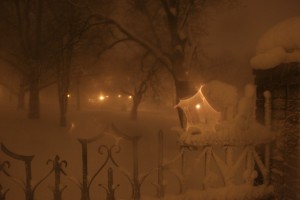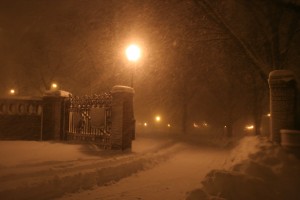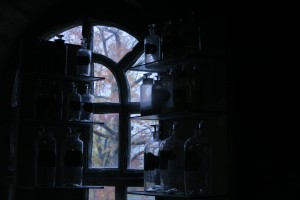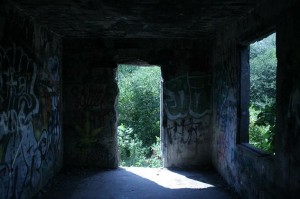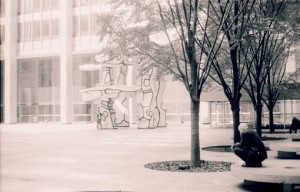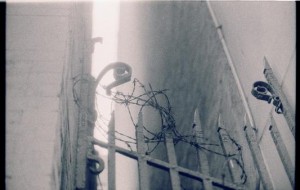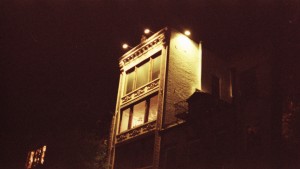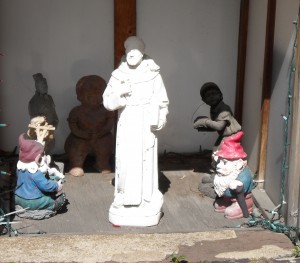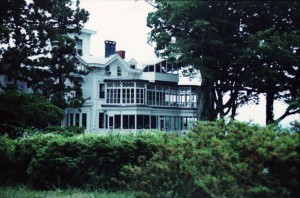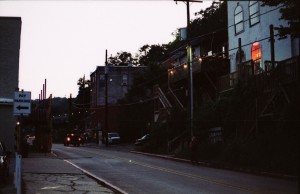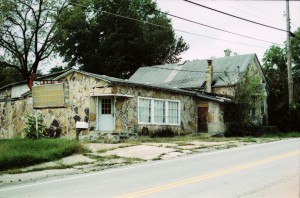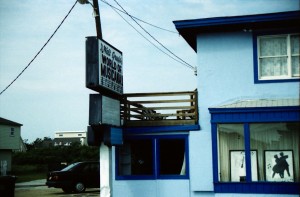As winter works its magic on the Magothy watershed, many of us find ourselves stuck indoors weighing the merits of an emergency hot chocolate run and wishing we were at least frozen someplace where there wasn’t laundry staring us in the face and a sinkful of dishes on top of our favorite tumbler, the one that makes even a cheap bottle of bourbon taste pretty good, which we really need now that we’re down to the cheap bottles. Then, after trying to work that glass out from under the rest of the dishes and breaking it in the process and sliding down the cabinetry to cry helplessly for a few minutes at the bleakness of it all, perhaps you, too, have thought to yourself, I need a vacation, even if it is only January.
And guess what? Inns and hotels and guest houses all over our great city want you to know that there is another way for Nagspeakers to pass the cold days in their own hometown. Many of our local gems have winter getaway packages that make it easy to find a home away from home right here at home, for when you need to get out of your house or you’re pretty sure you’ll crack up. Whether you need a weekend, a whole week, or even longer, there’s sure to be a spot that’s perfect for a getaway staycation. Here are a few options we like right now:
Bayside
Crossjack House
Our most famous tourist district is a ghost town in the winter months, which makes it the perfect place for a getaway, especially if what you really want is to have a whole clean new house from which to stare out at a slightly different frozen waterway than the one you could see from your own rattling windows. One of the grand old historic houses on the Bayside waterfront, Crossjack House was once the home of the outwardly-respectable Amos Cross family whose daughter Violet captained the smuggling sloop Lancet for a number of years with astounding success before falling in love with a young apprentice in the Customs Office. The rest, as they say, is history, and for three quarters of the year it’s all but impossible to get a reservation to vacation in this house, the scene of some of the key moments in Violet Cross’s unlikely youth. During the cold season, however, it’s just possible to rent Crossjack House, complete with ten bedrooms, two verandas, four secret passages, three nested attics, and two false-floored cellars—that we know of.
Flotilla
The Supernumerary
Flotilla when it’s cold is a lot like Flotilla when it’s warm: it’s still built mostly out of a bunch of boats lashed together. However, thanks to the frozen river surface under the hulls, what during the warmer months is just the space between the waterline and the decks above becomes a network of ice-floored tunnels. This underworld, sometimes called the coldway, was famously the setting for one of the stories in Phineas Amalgam’s classic folklore collection, The Raconteur’s Commonplace Book. The district’s sole inn, the Supernumerary, is the perfect place from which to conduct an exploration of the coldway. Rumor has it if you use the right password, the innkeeper, Mrs. Lobscouse, will give you a current, hand-drawn map to help you navigate the passages that lie below Flotilla, and a specific sequence of notes to play on your bosun’s whistle that will bring help if you get into trouble. Don’t have a bosun’s whistle? Flotilla’s probably not your scene, anyway. Have a bosun’s whistle but wondering what kind of trouble you could run into in the coldway? Good question, but we get the impression it’s more than just the possibility of weak ice.
The Printer’s Quarter
The Bookbindery*
For much of the year, the Bookbindery is home to a constantly-changing cast of the various sorts of ne’er-do-wells, shiftless layabouts, and hard-drinking, self-indulgent nutballs that we can lump together in the general category of writers. In any other context, you’d probably have to call the Bookbindery a sanitarium, but its literature and its clientele refer to it rather optimistically as a retreat venue. But lo, there are several weeks throughout the year when its usual denizens find something better to do with their time, like, perhaps, dishes and laundry. Many of those weeks fall during the winter, and if you can get a room there when the creative types aren’t cluttering up the place, you’ll delight in the art-deco gem that is the Bookbindery. Revel in its magnificent library if the last batch of writers hasn’t totally pillaged it, and try not to spend your kids’ inheritance in the attached stationery shop, if the last batch of writers has left anything for anybody else.
Whilforber Hill
Greenglass House
Are you the sort of person who loves the idea of wintering at a ski lodge, only you’d rather not bother about the skiing part? I hear you. It’s out of the way, but if you can get to it, the family-run Greenglass House is one of the coziest places in the city. We were skeptical, since we got our tip about this inn from, shall we say, someone we would have expected to know more about, shall we say, sailing under the radar than about finding vacation hotspots. But it’s on the Register of Historic Places thanks to a fairly amazing collection of stained glass, and in good weather it’s walking distance to the Ferrous Sanctus Monastery grounds. In the winter, it’s just a really wonderful place to curl up by the fire and sip a hot toddy. Be sure to go via the Quayside Harbors, so you can take the inn’s adorable little incline railway up the hillside to the inn’s grounds.
The Quayside Harbors
The Quenching Press**
A place that probably should be on the Register of Historic Places but isn’t is the Quayside Harbors’ Quenching Press. The pubs and taverns out on the piers tend to get the most attention from tourists staying in the Quayside Harbors (I know, I know, you’re thinking, what tourists ever stay in the Quayside Harbors? Probably like five, ever, but I bet all five of them stayed on the piers. It’s where you go when you go there). But they’re not the only options, and the Quenching Press is well worth looking into if you’re up for something that’s old and fascinating and completely out of place where it is. Also, the food is excellent. Look for the big old red stone warehouse on the inland side of the district. The ground floor is the tavern and restaurant, and the four floors of guest rooms look out over it from galleries above. You’ll take an antique lift (one of four) up to your room, which will probably be wallpapered by artifacts from a century ago, or more. The bartender looks like he stepped right out of the nineteenth century. It’s the perfect place for anyone who’d just as soon hole up and forget it’s winter—and the twenty-first century—at all.
The Slope
The Almshouse
Look, every guesthouse in the Slope wants your business in the winter and will give you an amazing deal if only you can get up the icy hills upon which those houses are perched in order to check in. We picked the Almshouse to mention here because it is by far and away the worst guesthouse to get to in bad weather and yet absolutely the best guesthouse to stay in in bad weather. Why? Because it was once a front for a smuggling racket that dealt mostly in drinkables. Liquor, sure, but also exotic drinking chocolate, rare coffees, and every conceivable sort of tea, the definition of which we’ll stretch to include steeped beverages that would blow your tea-drinking grandma’s mind and possibly make her hallucinate. And by “was once a front” we really mean was a front until last fall, when the runners got caught and the owner of the supposed “guesthouse” that needed to keep such big quantities on hand for its supposed “guests” had to open up for real to prove to Customs that it really was doing the business it said it was. Book your stay before Customs loses interest and reservations suddenly become impossible to get. Then order up a pot of something hot and fortifying and enjoy your stay.
Shantytown
Melancholy Street Public House
Don’t let the name fool you—if you stayed away from streets with unpleasant names, you’d never visit Shantytown at all. Yes, Melancholy Street is on the grounds of what was once an extensive graveyard in the neighborhood of Creve Coeur, and yes, I suppose there are more than a few headstones and mausoleums still littering the environs. Yes, the Public House was built incorporating what was once upon a time the cemetery’s gatehouse. But the menu is fabulous, the wine cellar is remarkable, and the rooms in the two gatehouse spires have delightful 360-degree views of scenic riverside Creve Coeur, which, again, despite the grim promises made by its name, is actually quite lovely. Just try not to speculate about what’s buried underfoot.
*Ouch. Apologies to all writers, on behalf of the rest of the NBTC.—KM (Responsible as usual for typing Hallie’s notes up and posting them in readable form.)
**Re. the Quenching Press—I’m confused by this. The red stone warehouse Hallie’s talking about here has been empty for ages. I can’t even find records of who owns it, or when it was last open for any kind of business. There’s certainly not a tavern there, or guest rooms of any kind. Call for information before you show up, is what I’m saying, but I have no idea who you’d call.—KM
